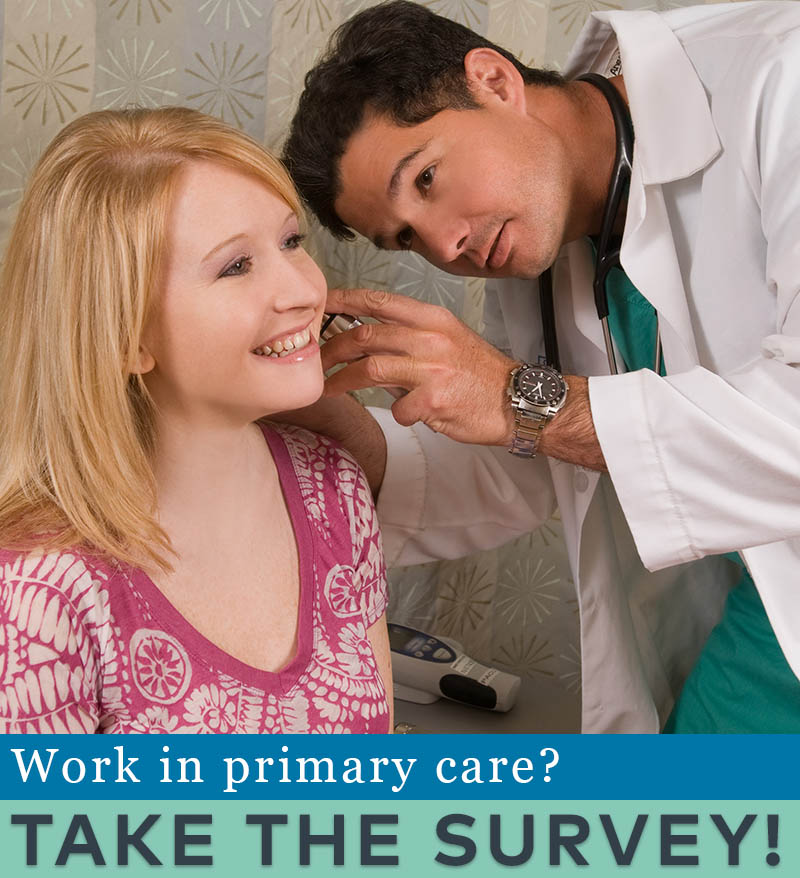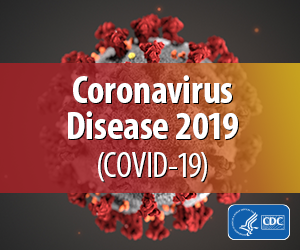You are looking at an archived version of our site. Please visit thepcc.org for a fresh, new experience!
You are here: Array » Primary Care & COV ...
Primary Care & COVID-19: Round 23 Survey
Check back regularly for the latest survey results and updates.
For data from the previous survey, see Round 22 Results.
The Primary Care Collaborative is partnering with the Larry A. Green Center to regularly survey primary care clinicians and patients to better understand the impact of COVID-19 in real time.
Who replied to the survey in round 23?
Nearly 1,500 primary care clinicians responded to the latest survey (round 23). Responses came from 49 states, the District of Columbia, and Guam. Colorado, Washington state, Virginia, and Texas all had over 100 responses, representing 36% of the total national sample. Just over three-quarters of responses came from primary care physicians (MDs and DOs); nurse practitioners represented 12% of responses, followed by PAs (3%), Phd and PharmD (each 1%), and other (8%). Nearly half (48%) of respondents are employees in a hospital or health system, followed by 28% who are owners or partners in their practice, and 24% are either employees at an independent practice or are self-employed. Respondents’ specialties were largely consistent with past weeks: over two-thirds (69%) family medicine; 13% internal medicine; 9% pediatrics; 3% geriatrics; 1% mental/behavioral health; <1% pharmacy; and 6% other. Only 11% of practices have a majority value-based payments. About a third (34%) serve a majority of low-income patients, and a fifth (21%) serve a majority of patients on Medicaid. Nearly 60% of clinicians report working in a practice that serves a majority of patients with multiple chronic conditions. Thirty-two percent work in a designated patient-centered primary care home.
Round 23 of the clinician survey ran November 13-17, 2020. Total responses: 1,472.
Results at a glance
-
Primary care is combatting the virus on multiple fronts - including misinformation. Over 60% of surveyed clinicians report spending “a significant amount of time” combatting misinformation about the pandemic among their patients. Many (58%) say patient distrust of public leaders has increased, while some (15%) also say patient distrust of primary care and their practice has increased. Just the volume of COVID-related questions alone has been trying: 43% of clinicians say they are “often overwhelmed” with the volume of patient questions.
-
Some of COVID-19-related changes in care delivery are sticking. Telehealth continues to be prevalent among primary care practices, with nearly 70% of respondents saying they used telehealth over the last four weeks for patients with stable chronic conditions, and 64% using it for mental or behavioral health counseling. Audio-only exchanges also continue: 37% of those surveyed say they used phone-based care for at least 20% of their patients.
-
Patients continue to suffer socially, economically, and mentally during the pandemic. A staggering 89% of surveyed clinicians report seeing higher levels of mental health concerns among their patients over the past four weeks, and over a third report seeing increased substance abuse. Patients’ financial situations continue to falter: Sixty-four percent report higher levels of unemployment among their patients; and a third of clinicians are seeing higher levels of food insecurity and higher levels of housing insecurity. Some primary care practices are taking steps to respond, with a fifth being “more involved in assisting with food insecurity” and 16% being “more involved in issues of housing insecurity.”
-
Billing in this new environment remains a challenge. Over half (52%) of surveyed clinicians report that their practice is often overwhelmed with constantly changing information, including protocols and billing codes. A fifth have waived copays and reduced fees to accommodate their patients’ loss of employment and/or health insurance. Still, much virtual care is being paid on par with in-person: only 16% say that video visits are NOT covered at parity with in-person (another 28% were "unsure"). Though nearly half said phone visits are NOT covered at parity with in-person (another 25% were "unsure").
-
The financial fallout of the pandemic means more mergers and other hits to independent practices. COVID-19’s financial impact on primary care continues, with a quarter of surveyed clinicians reporting that their fee-for-service volume is still over 30% lower than pre-pandemic levels. This has meant a small, but not insignificant, percentage of practices is closing or merging. Two percent of respondents say their practice is closing or has closed; five percent say their practice is merging/has merged with a larger system. Forty-four percent of those surveyed say clinician salaries have been reduced/skipped.
Learn more: Download the Round 23 Clinician Survey Executive Summary (includes select open-ended answers to survey questions)
| Fichier attaché | Taille |
|---|---|
| 262.67 KB |

Are you a physician, nurse practitioner, or PA working in primary care?
Help PCC and the Larry A. Green Center track how your practice is responding to the COVID-19 outbreak by completing the Green Center's occasional survey.
The regular surveys are no longer being conducted.
COVID-19 Updates
February 10, 2022 | JAMA Network
January 26, 2022
December 17, 2021
December 14, 2021 | Primary Care Collaborative
December 10, 2021 | The Commonwealth Fund
- ‹ précédent
- 2 of 39
- suivant ›
Recent News
August 16, 2024
August 12, 2024
July 16, 2024
Missed our May webinar, “The Commercial Market: Alternative Payment Models for Primary Care,” check out this clip!… https://t.co/mDZH3IINXK —
Il y a 2 années 6 mois
Did you catch @CMSinnovates' new #primarycare strategy? Thanks to concerted efforts from @NAACOSnews and other memb… https://t.co/mDnawqw8YW —
Il y a 2 années 6 mois
Not up to date on the #Medicaid Access and #Managedcare proposed rules important for #primarycare? No worries,… https://t.co/qB6sY3XCZ1 —
Il y a 2 années 6 mois
Secondary menu
Copyright © 2024 Primary Care Collaborative




